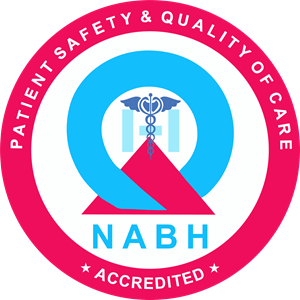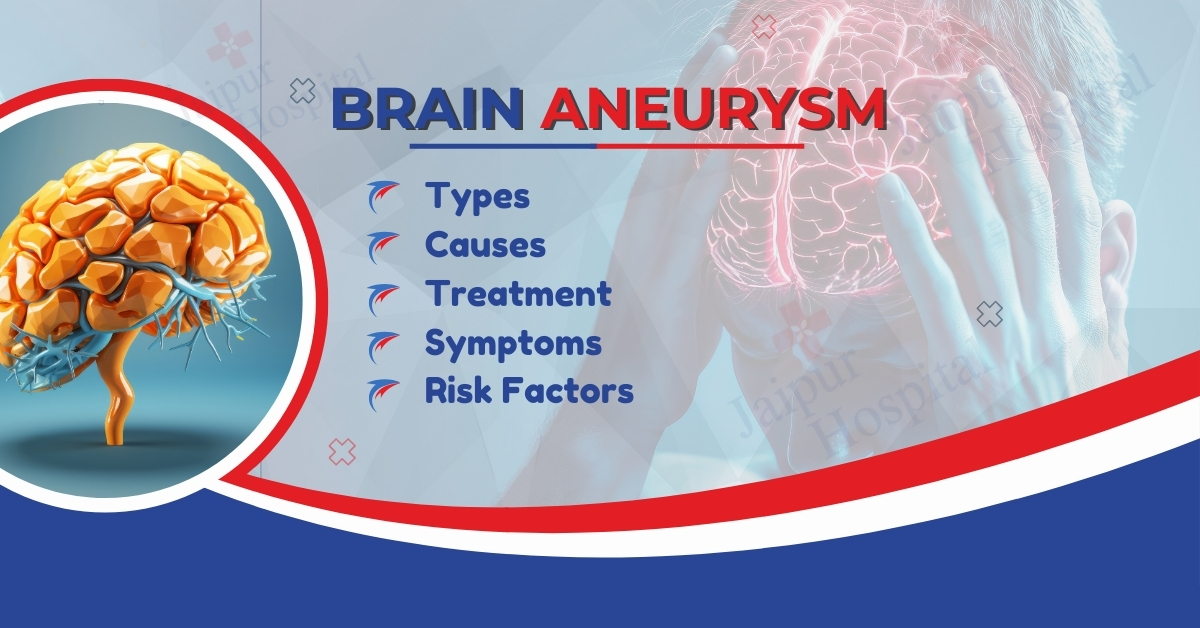A brain aneurysm, also known as a cerebral aneurysm, is a bulge or ballooning in a blood vessel in the brain that can potentially lead to life-threatening complications if it ruptures. Understanding brain aneurysms involves exploring various aspects such as their types, symptoms, causes, treatment options, and associated risk factors.
This comprehensive guide will delve into the different types of brain aneurysms, identifying the key symptoms that may indicate their presence. We’ll also examine the underlying causes and risk factors that contribute to their development. Finally, we’ll review the available treatment options and preventive measures that can help manage or reduce the risk of a brain aneurysm. Each of these topics will be explored in detail to provide a thorough understanding of this serious medical condition.
what is a brain aneurysm?
A brain aneurysm, also known as a cerebral aneurysm, is a localized dilation or ballooning of a blood vessel in the brain due to a weakened area in the arterial wall. This weakening leads to a bulging sac-like formation that can vary in size. The most common locations for brain aneurysms are at the bifurcations of major arteries within the Circle of Willis, a ring of interconnected arteries at the base of the brain.
Brain Aneurysm Types
Brain aneurysms can be classified into several types based on their shape, size, and location within the brain. The most common types include:
- Saccular Aneurysm (Berry Aneurysm):
- Shape: Saccular aneurysms are the most common type and are often described as “berry-shaped” because they resemble a small sac or pouch that protrudes from the arterial wall.
- Location: Typically found at the arterial bifurcations, particularly within the Circle of Willis, a network of arteries at the base of the brain.
- Risk of Rupture: Saccular aneurysms are more prone to rupture than other types.
- Fusiform Aneurysm:
- Shape: Fusiform aneurysms involve a circumferential dilation of a segment of the artery, leading to a spindle-shaped bulge. Unlike saccular aneurysms, they do not have a distinct neck.
- Location: These aneurysms usually occur in the basilar artery or other large arteries at the base of the brain.
- Risk of Rupture: Fusiform aneurysms are less likely to rupture than saccular aneurysms but can cause problems by compressing adjacent brain tissue or disrupting blood flow.
- Dissecting Aneurysm:
- Shape: Dissecting aneurysms occur when there is a tear in the inner layer of the artery wall, leading to blood flow between the layers of the artery. This can cause the artery to bulge and form an aneurysm.
- Location: These aneurysms can develop in any artery in the brain but are more common in the extracranial arteries, such as the carotid artery.
- Risk of Rupture: Dissecting aneurysms are particularly dangerous as they can lead to both hemorrhagic stroke and ischemic stroke due to blood vessel occlusion.
- Mycotic Aneurysm:
- Shape: Mycotic aneurysms are usually saccular but are distinguished by their association with infection. The infection weakens the arterial wall, leading to the formation of an aneurysm.
- Location: These can occur anywhere in the brain but are often associated with bacterial endocarditis.
- Risk of Rupture: The risk of rupture can be high due to the weakened state of the arterial wall from infection.
- Giant Aneurysm:
- Size: Giant aneurysms are defined as those larger than 2.5 cm in diameter. They can be saccular or fusiform.
- Location: They can develop in various locations within the brain.
- Risk of Rupture: These aneurysms pose a significant risk due to their size, potentially leading to severe neurological symptoms even without rupture.
Brain Aneurysm Symptoms
Brain aneurysm symptoms can vary widely depending on whether the aneurysm has ruptured or remains unruptured. Here’s a breakdown of the symptoms associated with each:
Unruptured Brain Aneurysm Symptoms
Many brain aneurysms, especially small ones, may not cause any symptoms and can remain undetected. However, if an unruptured aneurysm grows larger or presses on surrounding brain tissues or nerves, the following symptoms may occur:
- Headache: Persistent or localized headache, which may be described as a severe or unusual type of pain.
- Vision Problems: Blurred or double vision, or sudden loss of vision, particularly if the aneurysm presses on the optic nerve.
- Pain Above and Behind the Eye: Pain in this area can occur due to pressure on nearby nerves.
- Dilated Pupil: An enlarged pupil in one eye.
- Weakness or Numbness: Weakness, numbness, or paralysis on one side of the face or body, depending on the aneurysm’s location.
- Difficulty Speaking: Slurred speech or difficulty finding words.
- Seizures: In rare cases, an unruptured aneurysm can cause seizures.
Ruptured Brain Aneurysm Symptoms
When a brain aneurysm ruptures, it causes a subarachnoid hemorrhage, which is a medical emergency. The symptoms of a ruptured aneurysm are typically sudden and severe:
- Sudden, Severe Headache: Often described as the “worst headache of your life,” this pain comes on abruptly and intensely.
- Neck Stiffness: Sensitivity to light (photophobia) and a stiff neck are common due to irritation of the meninges.
- Nausea and Vomiting: Severe headaches may be accompanied by nausea and vomiting.
- Loss of Consciousness: Fainting or loss of consciousness may occur.
- Seizures: A sudden seizure can be a sign of a ruptured aneurysm.
- Confusion or Altered Mental State: Disorientation, confusion, or a sense of impending doom may precede or accompany the headache.
- Drooping Eyelid: Ptosis, or drooping of one eyelid, may be observed.
- Loss of Balance or Coordination: Difficulty walking, dizziness, or loss of coordination can occur.
- Visual Disturbances: Sudden changes in vision, such as double vision or loss of vision.
Brain Aneurysm Causes
The exact causes of brain aneurysms are not always clear, but several factors can contribute to their development:
- Genetic Predisposition: Family history can play a role, as people with a family history of brain aneurysms are at a higher risk. Certain inherited conditions, such as polycystic kidney disease or Ehlers-Danlos syndrome, are also associated with an increased risk.
- Hypertension (High Blood Pressure): Chronic high blood pressure can put extra strain on the walls of blood vessels, leading to the formation of an aneurysm.
- Smoking: Smoking is a significant risk factor for developing brain aneurysms, as it weakens blood vessel walls and contributes to the formation and growth of aneurysms.
- Age and Gender: Brain aneurysms are more common in adults than in children and tend to occur more frequently in women than men, particularly after age 40.
- Trauma or Injury: Head injuries can sometimes lead to the formation of an aneurysm.
- Infection: In rare cases, infections that affect the arteries in the brain (mycotic aneurysms) can lead to aneurysm formation.
- Drug Use: The use of certain drugs, especially cocaine and amphetamines, which can cause a sudden increase in blood pressure, has been linked to the development of brain aneurysms.
- Atherosclerosis: Hardening of the arteries due to a buildup of plaque can weaken the blood vessel walls, contributing to aneurysm formation.
- Abnormal Blood Flow: Conditions that affect the normal flow of blood through the arteries, such as arteriovenous malformations (AVMs), can increase the risk of aneurysm formation.
What Causes Brain Aneurysms to Rupture?
A brain aneurysm rupture occurs when the bulging section of a weakened blood vessel in the brain bursts, leading to bleeding in the surrounding brain tissue (hemorrhagic stroke). The rupture of a brain aneurysm is a critical medical emergency and can be life-threatening. Several factors contribute to the likelihood of an aneurysm rupturing:
- Size of the Aneurysm
- Larger Aneurysms: Generally, the larger the aneurysm, the higher the risk of rupture. However, small aneurysms can also rupture, particularly if other risk factors are present.
- Location of the Aneurysm
- Certain Locations in the Brain: Aneurysms located in specific parts of the brain, such as the posterior circulation (e.g., the basilar artery or posterior communicating artery), are more prone to rupture.
- High Blood Pressure (Hypertension)
- Elevated Blood Pressure: Chronic high blood pressure can put continuous stress on the walls of the aneurysm, increasing the likelihood of rupture.
- Smoking
- Tobacco Use: Smoking damages blood vessel walls and can accelerate the growth of an aneurysm, leading to a higher risk of rupture.
- Rapid Increase in Blood Pressure
- Sudden Spikes in Blood Pressure: Activities or conditions that cause a sudden increase in blood pressure, such as intense physical exertion, heavy lifting, straining, or severe emotional stress, can trigger a rupture.
- Aneurysm Shape and Structure
- Irregular Shape: Aneurysms with irregular or lobulated shapes (having multiple lobes) are more likely to rupture than those with a regular, smooth shape.
How to prevent brain aneurysm
Preventing a brain aneurysm, or reducing the risk of one forming and rupturing, involves managing the risk factors that can contribute to the condition. While it’s not always possible to prevent an aneurysm, especially if there is a genetic predisposition, certain lifestyle changes and medical interventions can help lower the risk. Here are some strategies for prevention:
- Control Blood Pressure: Keeping blood pressure within a healthy range is one of the most important steps in preventing a brain aneurysm. This can be achieved through lifestyle changes, such as reducing salt intake, maintaining a healthy weight, exercising regularly, and taking prescribed medications if necessary.
- Quit Smoking: Smoking is a major risk factor for aneurysm formation and rupture. Quitting smoking can significantly reduce this risk and improve overall vascular health.
- Limit Alcohol Consumption: Excessive alcohol consumption can raise blood pressure and increase the risk of aneurysm. Limiting alcohol intake can help reduce this risk.
- Eat a Balanced Diet: A diet rich in fruits, vegetables, whole grains, and lean proteins can help maintain healthy blood vessels. Reducing the intake of saturated fats, cholesterol, and sodium can also help prevent high blood pressure and atherosclerosis.
- Stay Physically Active: Regular physical activity helps to maintain cardiovascular health and keep blood pressure under control. Aim for at least 150 minutes of moderate aerobic activity or 75 minutes of vigorous activity each week.
- Don’t Use Stimulant Drugs: Drugs like cocaine and amphetamines can cause sudden spikes in blood pressure, increasing the risk of aneurysm formation and rupture. Avoiding these substances is crucial for aneurysm prevention.
- Reduce Stress Levels: Chronic stress can contribute to high blood pressure. Practice stress-reducing techniques such as meditation, deep breathing exercises, yoga, or other relaxation methods.
- Monitor Health Conditions: Regular checkups can help detect and manage conditions like hypertension or high cholesterol that could contribute to aneurysm risk. Screening may be recommended for individuals with a family history of aneurysms.
- Treat Infections Promptly: Some infections can weaken blood vessel walls. Promptly treating infections and managing inflammatory conditions can help reduce the risk.
Brain Aneurysm Treatment
The treatment of brain aneurysms depends on whether the aneurysm has ruptured or remains unruptured. Each situation requires a different approach, and the treatment choice depends on factors like the aneurysm’s size, location, the patient’s age, and overall health.
A brain aneurysm is a medical emergency requiring immediate intervention to stop the bleeding and reduce the risk of further complications. The primary treatments include:
- Surgical Clipping
- Procedure: A neurosurgeon performs a craniotomy (opening the skull) to access the aneurysm. A small metal clip is placed at the base (neck) of the aneurysm to stop blood flow into it, preventing further bleeding.
- Purpose: This method seals off the aneurysm from the rest of the blood circulation in the brain.
- Endovascular Coiling (Embolization)
- Procedure: A catheter is inserted into an artery, usually in the groin, and guided through the blood vessels to the aneurysm. Tiny platinum coils are inserted into the aneurysm to induce clotting, sealing off the aneurysm from the blood flow.
- Purpose: This minimally invasive technique reduces the risk of further bleeding and can be an alternative to open surgery.
- Medications
- Nimodipine: Often used to reduce the risk of vasospasm, a complication that can cause further brain damage by narrowing blood vessels after a rupture.
- Pain Relievers: Used to manage severe headaches and other symptoms.
- Antiseizure Medications: These may be prescribed to prevent seizures after a rupture.
- Intravenous Fluids: To maintain blood pressure and prevent complications like brain swelling.
- Ventriculostomy
- Procedure: A temporary drainage catheter may be inserted into the brain’s ventricles to relieve pressure caused by excess cerebrospinal fluid or blood accumulation after a rupture.
- Rehabilitation
- Long-term Care: After the acute phase, patients often require rehabilitation to recover from the effects of the bleeding, which may include physical therapy, occupational therapy, and speech therapy.
- Flow Diverter Surgery
- Procedure: A flow-diverting stent is placed within the artery where the aneurysm is located. The stent redirects blood flow away from the aneurysm, promoting clotting inside the aneurysm and reducing the risk of rupture.
- Purpose: This is particularly useful for larger or more complex aneurysms that are difficult to treat with clipping or coiling.
- Pipeline Embolization Device (PED)
- Procedure: Similar to a flow diverter, the PED is a mesh tube placed across the aneurysm’s neck. It reduces blood flow into the aneurysm while allowing blood to continue flowing through the artery.
Brain Aneurysm Risk Factors
Also read: https://jaipurhospital.in/arthritis/
Brain aneurysm risk factors are conditions or behaviors that increase the likelihood of developing a brain aneurysm. While anyone can develop an aneurysm, certain factors make it more likely. These risk factors include:
- Family History: A family history of brain aneurysms increases your risk, especially if multiple family members have had them.
- Genetic Disorders: Certain inherited conditions, such as polycystic kidney disease, Ehlers-Danlos syndrome, Marfan syndrome, and neurofibromatosis, are associated with an increased risk of aneurysms.
- Increased Age: The risk of brain aneurysms increases with age, particularly after the age of 40.
- Female Gender: Women are more likely to develop brain aneurysms than men, possibly due to hormonal factors that affect blood vessel walls.
- Chronic Hypertension: Persistent high blood pressure can weaken blood vessel walls, making it a significant risk factor for developing and rupturing aneurysms.
- Tobacco Use: Smoking is one of the most significant risk factors. It damages the blood vessels, promotes the formation of aneurysms, and increases the risk of rupture.
- Illicit Drug Use: The use of stimulant drugs, such as cocaine and amphetamines, can cause sudden spikes in blood pressure, increasing the risk of aneurysm formation and rupture.
- Excessive Drinking: Regular, heavy alcohol consumption can contribute to high blood pressure and weaken blood vessels, increasing the risk of aneurysm formation and rupture.
- Hardening of the Arteries: The buildup of plaque in the arteries can weaken the blood vessel walls and contribute to the development of aneurysms.
- Trauma or Head Injury: A history of head trauma can sometimes lead to the development of an aneurysm.
Conclusion
A brain aneurysm is a serious condition that requires prompt attention due to the risk of rupture, which can lead to life-threatening complications. Managing risk factors like high blood pressure and smoking is key to prevention. Early detection and advanced treatment options, such as those available at Jaipur Hospital, can significantly improve outcomes. Jaipur Hospital is renowned for its expertise in treating brain aneurysms, offering state-of-the-art care and successful interventions to ensure the best possible recovery for patients.


